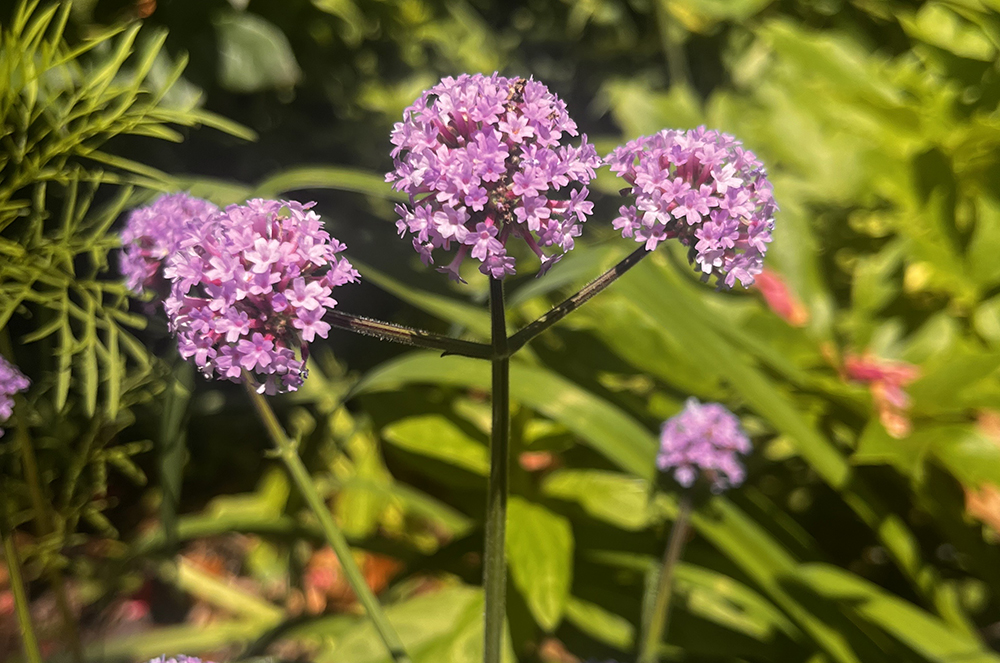Most of the plants in my garden have gained my affection for one reason or another, perhaps because they were a gift from a dear friend or because I love the way their scent fills the air. Currently, the many virtues of verbena bonariensis, commonly known as tall verbena, have my attention.
As you may have guessed, the name “tall” verbena distinguishes this plant from garden verbena, which is a smaller type of verbena often used in hanging baskets or as a border plant. That variety, which grows low to the ground, is a tender perennial in our South Jersey area and is often treated as an annual since it is susceptible to freezing temperatures. Tall verbena, however, is a perennial, hardy in USDA zones 7-11. Towering over other plants in your garden, tall verbena normally grows three to four feet high. However, tall verbena has an airy, see-through look, so it isn’t necessary to relegate this elegant plant to the back of the row. In fact, this versatile flower will look lovely near the front of your herbaceous border or nestled behind shorter plants. Clusters of lovely purple flowers top the sandpaper-like squared stems. Despite their towering heights, the stems of tall verbena are sturdy, so in most cases, you won’t need to stake or support these plants.
Now for the really good part — tall verbenas are pollinator magnets. Everything from bees and butterflies to birds are attracted to the beautiful flowers. Butterflies such as eastern tiger swallowtails, fritillaries, and hairstreaks can be found enjoying the flowers of these nectar-rich plants. While you may see hummingbirds visiting their tubular flowers, many gardeners growing this plant have also reported seeing the hummingbird hawk-moth on their tall verbena. But one of my favorite gardening moments occurs toward the end of the season. While you will want to deadhead the flowers during the summer to encourage more blooms, late in the season, allow the flowers to go to seed. This is when you get to enjoy the magical moments of spying goldfinches, our state bird, resting atop these tall plants, looking for seeds. It is almost comical to see these vibrant yellow and black birds balancing on the purple flowers as the stems blow in the wind.
You will want to plant your tall verbena in a sunny location with well-drained soil. Once established, this type of verbena has the added attribute of being somewhat drought-resistant. In addition to leaving seeds for the goldfinches, by allowing your verbena to go to seed, you may be lucky enough to have them self-seed for the following season. They are easy to grow, and the light purple color will blend well with most of your plants. Once you make the acquaintance of this amazing plant, you will agree that it’s a must-have in your pollinator garden.
Tammy Thornton lives with her husband, children, and crazy pets while enjoying a life of gardening, cooking, and going to the beach.

















